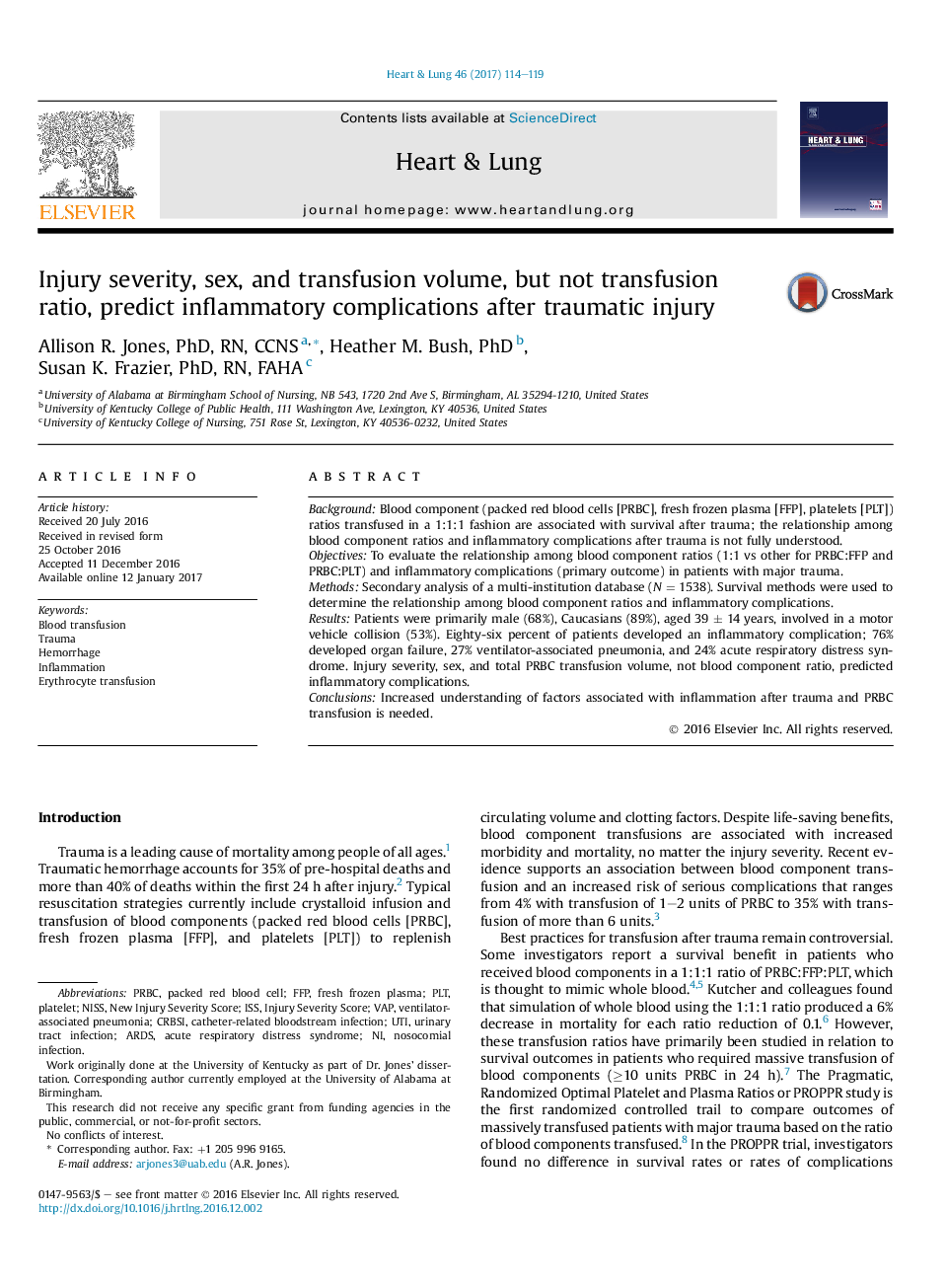| کد مقاله | کد نشریه | سال انتشار | مقاله انگلیسی | نسخه تمام متن |
|---|---|---|---|---|
| 5568216 | 1403671 | 2017 | 6 صفحه PDF | دانلود رایگان |
- Patients received an average of 2:1 PRBC:FFP and 2.6 PRBC:PLT following trauma.
- More than 80% of patients developed at least one inflammatory complication.
- No differences noted in inflammatory complications based on blood component ratio.
- PRBC volume, sex, and injury severity, not component ratio, predicted complications.
BackgroundBlood component (packed red blood cells [PRBC], fresh frozen plasma [FFP], platelets [PLT]) ratios transfused in a 1:1:1 fashion are associated with survival after trauma; the relationship among blood component ratios and inflammatory complications after trauma is not fully understood.ObjectivesTo evaluate the relationship among blood component ratios (1:1 vs other for PRBC:FFP and PRBC:PLT) and inflammatory complications (primary outcome) in patients with major trauma.MethodsSecondary analysis of a multi-institution database (N = 1538). Survival methods were used to determine the relationship among blood component ratios and inflammatory complications.ResultsPatients were primarily male (68%), Caucasians (89%), aged 39 ± 14 years, involved in a motor vehicle collision (53%). Eighty-six percent of patients developed an inflammatory complication; 76% developed organ failure, 27% ventilator-associated pneumonia, and 24% acute respiratory distress syndrome. Injury severity, sex, and total PRBC transfusion volume, not blood component ratio, predicted inflammatory complications.ConclusionsIncreased understanding of factors associated with inflammation after trauma and PRBC transfusion is needed.
Journal: Heart & Lung: The Journal of Acute and Critical Care - Volume 46, Issue 2, MarchâApril 2017, Pages 114-119
